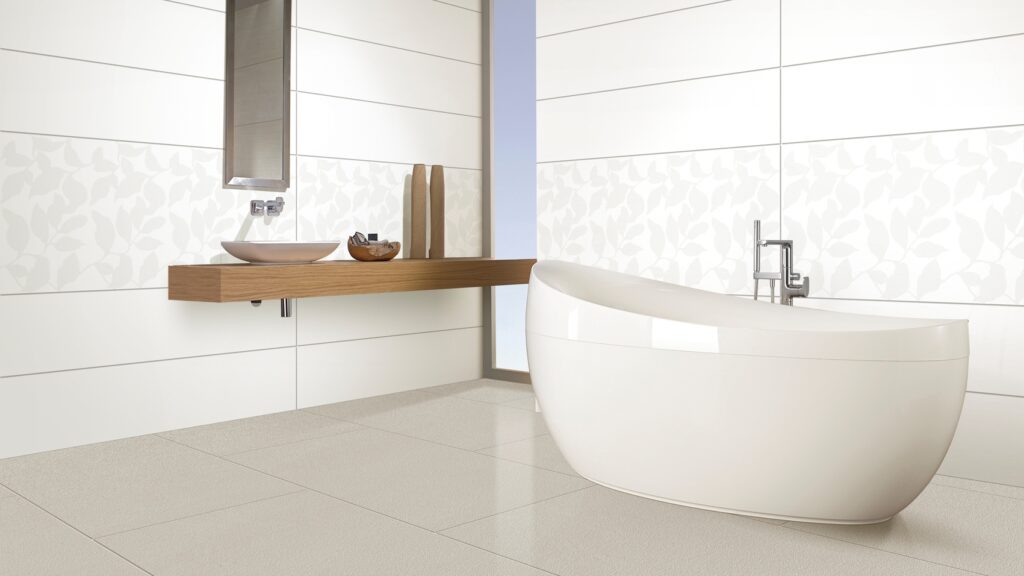1. Set Your Budget
The first thing you should do is determine your budget.
Bathroom renovations can get expensive. They don’t need to be pricey, but upmarket fittings, tiles, bathtubs and appliances can blow your budget.
Set a limit and stick to it. The rule of thumb is that your bathroom renovation should cost about 1.5% of the total property value. That may sound like a lot, but a renovated bathroom can add up to 10% to your home’s value. For reference, it costs about $15,000 to $25,000 to completely renovate a family bathroom.
2. Position the Toilet and Shower
Plumbing is one of the biggest expenses in a bathroom renovation. Where you choose to place the toilet, shower, bath and vanity will affect the length of plumbing runs and the amount of labour involved.
These fittings also determine the layout of the rest of the space, so it’s good to make these decisions early.
We generally recommend leaving major plumbing fixtures where they are. Moving a toilet or shower is a major project. If your home has a concrete slab, this requires digging up the floor and laying new concrete, which is time consuming and expensive.
It’s possible to move plumbing fixtures if your existing bathroom has a poor layout – just make sure you get a quote from a plumber before you commit.
3. Plan the Space
Once you know where the toilet and shower belong, you can figure out the rest of the space. This is your chance to decide whether you want features like a bathtub (and whether it’s built-in or freestanding), double vanities, built-in cabinets and provisions for a washing machine.
It’s helpful to stand in your space while doing this. Use a tape measure and some painter’s tape to mark the location and size of each fixture. That will give you a better idea of how the space will feel once everything has been installed.
4. Choose Your Materials Palette
The materials you choose will have a big impact on the look and feel of your new bathroom. Materials set the tone and style you go for, and they can affect things like lighting, paint colours, tile colours and your budget.
A good place to start is simply with choosing a materials palette. We recommend beginning with your floor and wall tiles, as well as any accent tiles you want to install. Tiles will serve as the canvas for the rest of your design, so they need to be chosen first.
After that, you can choose other materials, such as metal tapware, timber for vanities, and details such as trims. You don’t need to select actual products at this stage – it’s more important to focus on choosing materials so you know what to look for when shopping for fixtures and fittings.
5. Add Some Luxury Touches
Got some room in your budget? Think about adding a few luxury touches to your renovation!
Features like underfloor heating, integrated lighting, smart mirrors and upmarket tiles will elevate your space significantly. These features aren’t a necessity, but they can add significant value to your renovation, with buyers commonly expecting luxuries such as underfloor heating.
6. Mirrors and Lighting
Bathrooms are often overlooked when it comes to lighting, but the right scheme can make all the difference.
These days we’re moving away from simple downlights and opting for more sophisticated lighting options, such as pendants, in-mirror lighting and LED strips.
Lighting should be paired with plenty of mirrors. Don’t underestimate the size of the mirror you need – bigger is better in most cases. Mirrors reflect light and can dramatically brighten up any bathroom.
7. Order Your Materials
Once you’ve made your plans, visualised the space, contacted a plumber and completed your research, you can finally order materials.
This is a measure-twice-cut-once kind of job. Take detailed measurements of your bathroom, and then triple check them before ordering materials such as tiles. For tiles, we recommend measuring the surface area and then adding 10% for waste (e.g. tiles break or are cut incorrectly during installation).

